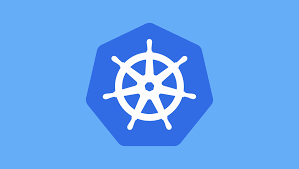Kubernetes - Resource Limits
Explore what resource limits are, how they work, and best practices for configuring them.
Kubernetes - Resource Limits
Introduction
Kubernetes provides powerful mechanisms to manage resource allocation and consumption within a cluster. One of the key aspects of resource management is resource limits, which help ensure fair usage, prevent resource exhaustion, and maintain application stability.
What Are Resource Limits?
- Resource limits in Kubernetes define the maximum amount of CPU and memory (RAM) that a container can use.
- These limits prevent containers from consuming excessive resources, which could negatively impact other workloads running on the same node.
- Kubernetes uses the following resource constraints:
Requests:- The minimum amount of CPU and memory guaranteed for a container.
- Kubernetes uses this value to decide on which nodes to place the Pod.
Limits:- The maximum amount of CPU and memory a container can use.
- If a container exceeds this limit, it might be terminated and restarted, depending on the specific resource and the container’s restartPolicy.
- Resource limits can be set for both CPU and memory.
CPUis specified in CPU units, with 1 CPU equivalent to 1 AWS vCPU, 1 GCP Core, 1 Azure Core, or 1 Hyperthread on a bare-metal Intel processor.Memoryis specified in bytes, and can be expressed in fixed-point integers or as a decimal using one of these suffixes: E, P, T, G, M, K, Ei, Pi, Ti, Gi, Mi, Ki.
Default Limits for a Container: 1 vCPU - 512Mi
Sample YAML:
1 2 3 4 5 6 7 8 9 10 11 12 13 14 15
apiVersion: v1 kind: Pod metadata: name: myapp-pod spec: containers: - name: myapp-container image: myapp resources: requests: memory: "64Mi" cpu: "250m" limits: memory: "128Mi" cpu: "500m"
The default and max limits and requests can be set at the namespace level using the
kind: LimitRange.1 2 3 4 5 6 7 8 9 10 11 12 13
apiVersion: v1 kind: LimitRange metadata: name: resource-limits spec: limits: - default: memory: 512Mi cpu: "1" defaultRequest: memory: 256Mi cpu: "0.5" type: Container
Understanding CPU and Memory Units
CPU: Measured in millicores (m). 1000m = 1 CPU core. For example, 500m means half a core.Memory: Measured in bytes. Common units: Mi (Mebibytes) and Gi (Gibibytes). For example, 256Mi means 256 Mebibytes.
What Happens When Limits Are Exceeded?
CPU Limits- If a container exceeds its CPU limit, Kubernetes throttles it, slowing down execution but not terminating it.
- A container cannot use more CPU than specified limit.
Memory Limits- If a container exceeds its memory limit, Kubernetes kills it with an OutOfMemory (OOM) error.
Why Set Resource Limits?
- Setting resource limits helps in:
Preventing resource starvation: Ensuring that no single container consumes all available resources.Avoiding performance degradation: Preventing excessive memory or CPU usage from impacting other applications.Improving cluster stability: Ensuring fair distribution of resources across workloads.Enabling auto-scaling: Allowing Kubernetes to make better scheduling and scaling decisions.
Best Practices for Setting Resource Limits
Use Resource Requests and Limits Together: Requests ensure guaranteed minimum resources, while limits prevent excessive consumption.Analyze Workload Resource Usage: Use tools like kubectl top pods or Prometheus to monitor resource usage before setting limits.Avoid Over-Provisioning: Setting excessive requests can lead to inefficient resource utilization.Use Horizontal Pod Autoscaler (HPA): Automatically scale pods based on CPU/memory usage.Define Limits in ResourceQuota: Enforce limits at the namespace level using ResourceQuota to prevent overallocation.- Example:
1
2
3
4
5
6
7
8
9
10
11
apiVersion: v1
kind: ResourceQuota
metadata:
name: namespace-quota
namespace: my-namespace
spec:
hard:
requests.cpu: "2"
requests.memory: "2Gi"
limits.cpu: "4"
limits.memory: "4Gi"
This post is licensed under CC BY 4.0 by the author.
